I love shiny cards. Ever since I started in this hobby back in the early 90s, I have always gravitated towards sets that feature the Chromium stock that has been a staple of the hobby for decades. When I started collecting WWE back in 2017, there wasnt much of it to go around, with Chrome and Finest not reemerging in the market until 2020. As you can imagine, most of my collection focuses on high end shiny examples from the recent boom. Much to my pleasure, Select is the next in line for that lineage, trying to capitalize on a market that has slumped with the hobby downturn over the last few months.
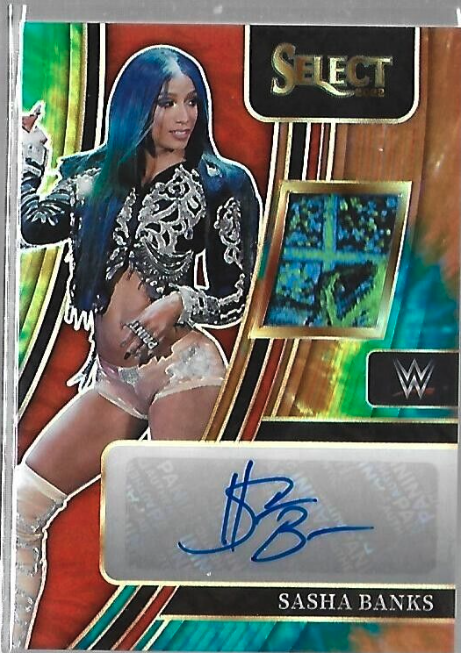
First, lets dive a bit deeper into what Select is all about, because for most WWE collectors, the releases of Prizm, Revolution and Select were very unfamiliar territory. Back when Panini America first took over the major licenses in NBA and eventually NFL, the focus on Shiny products hadnt reached the fever pitch it is at right now. Topps had been EXCEPTIONALLY successful with Chrome style products for their flagship and bowman lines, so it shouldnt be shocking that Panini tried their own hand at the wheel.
Prizm was created as a flagship answer to Topps Chrome, while Select almost exactly mirrored Topps Finest’s content and target market. Over the years, sets like Optic and Spectra have taken this even further, with fringe products like Obsidian gaining steam along the way as well. This might be the first year of WWE Select, but the actual product has been around for almost 10 years.
To me, Select has always been a better looking set than Prizm. For whatever reason, that hasnt driven the same amount of importance with collectors, as its clear that Prizm’s status as the flagship Panini set has overridden many of the flaws it has in its construction.
Select has always had a better design, better content, and a better price per box. The WWE release is representative of that approach as well, but it has taken things to a new place because of the new status of the market.
As a result, it should be no surprise that Select WWE has had the outpouring of support and acclaim from collectors that it has had. There are a ton of the elements that made Prizm and Revolution fun and exciting, while exhibiting very few of the drawbacks. I want to go through a few of those thoughts here, because I am enthralled by this product.
Exceptional Photo Usage
When I started seeing the first auctions come across, the first thing that caught my eye were the choices made with the photography in each level of base. WWE usually wants their superstars displayed with official renders, available in an online database that is curated multiple times per week. If you see a match card graphic on WWE TV, the photos in that database are used. Its a huge part of what makes the WWE presentation what it has been for decades.

Topps used that database a lot as we saw in photos for their sets, but Panini seems to have made it a point to make the action sit at the forefront of their brands. As someone who literally SHOUTED WITH ALL CAPS at Panini about their posed photos on NBA and NFL cards for 10+ years, this development is nothing short of incredible.
The good thing about a license like WWE is that visual documentation is a big focus for their business model, which for other niche licenses might not be the case. There are tons of photos to pull from, as WWE has had ringside photographers on the payroll since the 80s and 90s. Panini Select seems to have built each card with care, as photos were chosen to showcase the best of each superstar they depicted. Even better, the ones that broke the borders of the cards, and presented a unique visual engagement made things even better.
As someone who lives by the photo on a card, I could not be more in love with the way Select was incorporating this element into the set, and it made collecting it that much more fun.
Unique Relic Content
Both Prizm and Revolution were built without a relic element to the product, something that Select is almost dependent on. This means that there were two paths that could be a part of the plan – either the more plain relic content that Topps was relegated to in the final years of their license, or the more dynamic relic content that Panini seemed to have negotiated as part of their license deal.
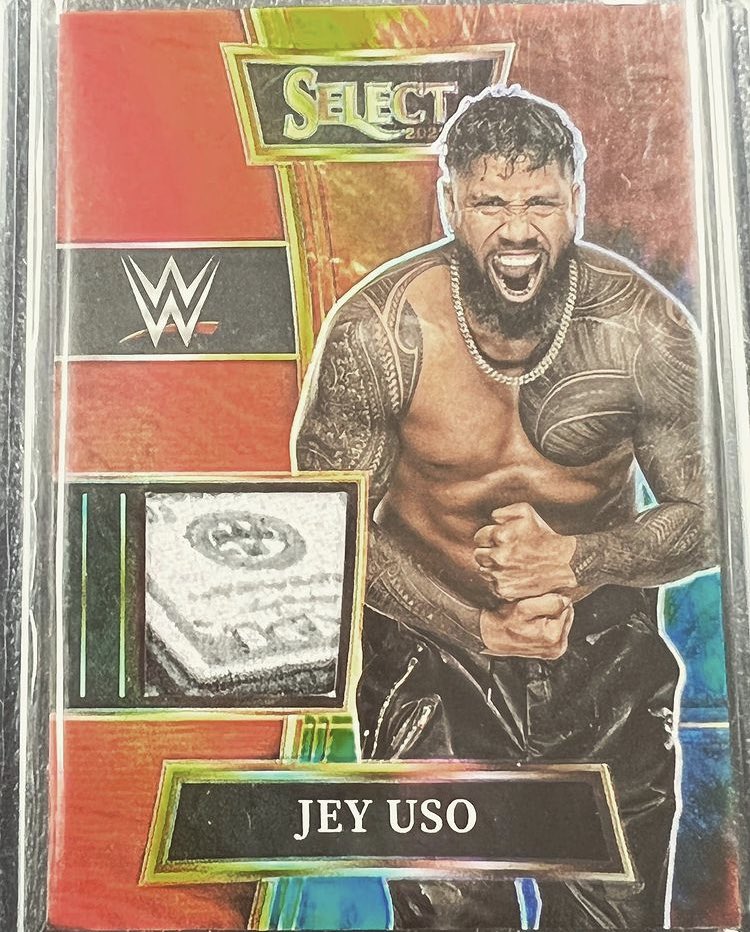
Topps tended to be very conservative with their relic content, as I believe it was likely dictated to them by the WWE. They used cut up pieces of mat, ladders, chairs and table pieces, and in some very special circumstances – gear provided to them (see Fully Loaded 2020).
Panini decided to go a bit more towards their brand style for NFL and NBA, using the colorful shirts that are popularized through almost half a century of WWE merchandising. Although these pieces of memorabilia dont seem to be tied to a TV event, they create a unique collectibility to the cards that are built with the pieces embedded.
Player worn content is a controversial subject in the hobby, because it represents a divergence from Game Used relics in hobby packs. Instead, cheaper jerseys are worn for a quick second at a signing and cut up for cards the same way a game used piece would have been cut up in the original years of the memorabilia card era.
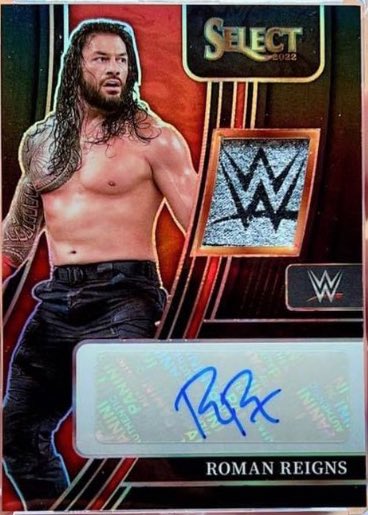
We havent gotten confirmation on which realm these relics come from, but its likely the latter. The difference here is that WWE has never had these types of things as a main focal point of a product. Even though the relics are likely not from a TV taping, the colorful changes in relic content breeds a ton of fun chasing down the unique pieces.
Similarly, for the first time in WWE card history, the 1/1s seem to be built with specially cut WWE logo relics, something that has become a staple in the mainstream sports card chase. These cards have shown to be stunning centerpieces, and present a chase like we havent had in WWE cards before.
With the success of Select’s relic content, it opens up potential high end product lines for the license that wouldnt have been possible without this new approach.
The Massive Parallel Adventure
When looking at product configuration for Chrome stock products, parallels drive as much value as any other part of the set. This is a VERY foreign concept for people who have lived in the bubble of WWE cards for their entire collecting life, as it used to be the autograph content that determined value.
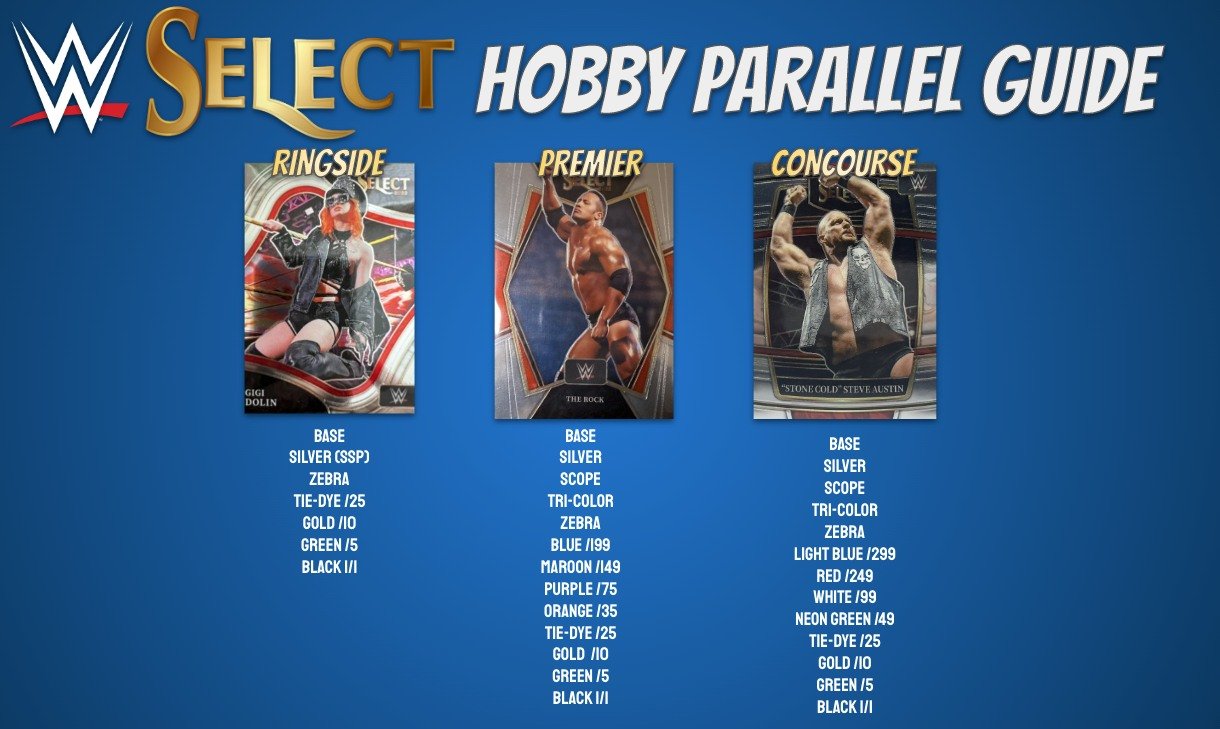
With Select, there are three base card levels, and a retail variation to boot. Each base variation has complexity in the parallels that make up the checklist, leaving about 40-50 cards needed for many supercollectors (like myself) to chase for top stars.
This is excessive for a number of reasons, but also a driver for focus on a long term chase that hasnt been available in WWE as of yet. Prizm may have had 20 parallels to collect, but this can be double that. Making this even more complicated is that some stars are only available in certain tiers, and others only in the retail configurations. This is a chase that may take some collectors years to complete, especially for the rarer cards that may not surface at all.
For some, this wide array of targets is more of a drawback, but with so few WWE products on the market, and even fewer chrome style products, this is a needed piece of the puzzle to keep the chase going when delays could hamper frequent releases to bog down the calendar.
A Deep and Well Conceived Checklist
When Prizm was released, I mentioned that it would be a landmark product because of the checklist. I feel like Select was conceived in the same vein and offers a huge amount of variety across the major WWE TV brands and the legends that populate it’s history.
The mix of current talent, rookie talent, and HOF / Legend content is exceptional, and its shocking some of the names that Panini was able to include in a product that comes on the heels of a leviathan like Prizm.
New talent like Roxanne Perez and Nikkita Lyons have their first Panini cards, alongside vets like Ken Shamrock, Terry Funk and Michelle McCool who havent had WWE cards in a few years. Combine those with the first Panini shiny cards of Macho Man and others left off the Prizm checklist, and I have seen a lot of happy collectors.
The Cool Factor
So much of what makes us happy as collectors is that cards can look really cool. Prizm had aspects of that with some of the pieces of their set, but its nothing like what Select offers. Tie Dye, Tiger, Zebra, and other fun parallel pattern designs seem to get more collectors engaged, and the relic content adds a new layer of connection to the mainstream hobby. These things drive interest, and interest drives both fun and value.
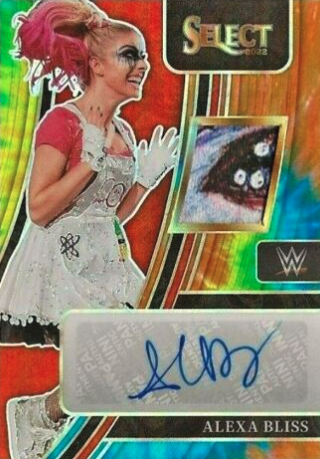
Select just feels like a cool product that focuses more on the things collectors want to see and chase, and that isnt easy to accomplish. Tastes are subjective, but its hard to find people that say “Oh well, Select sucks and doesnt deserve the hype!” People might say that the product isnt what they collect, or isnt for their focus in the hobby, but few have said its a bad product with bad value and a bad design.
I do believe that there are still some WWE collectors who dont get what drives the increased value across products like Select or Prizm, but I also feel like this is the first time where I havent seen those people trying to dominate the conversation with negativity. Exposure to this new era of WWE collecting has been a tumultuous experience for many, but this product seems to excite a number of the previous generation of WWE collectors as much as the new generation.
As things progress with Panini’s WWE license, I would hope the above mentioned elements of the product continue to be a focus going forward. Although its unclear if Panini will remain free of Fanatics’ consolidation plans, its very clear that the success they have found with Select has been nothing short of refreshing.



